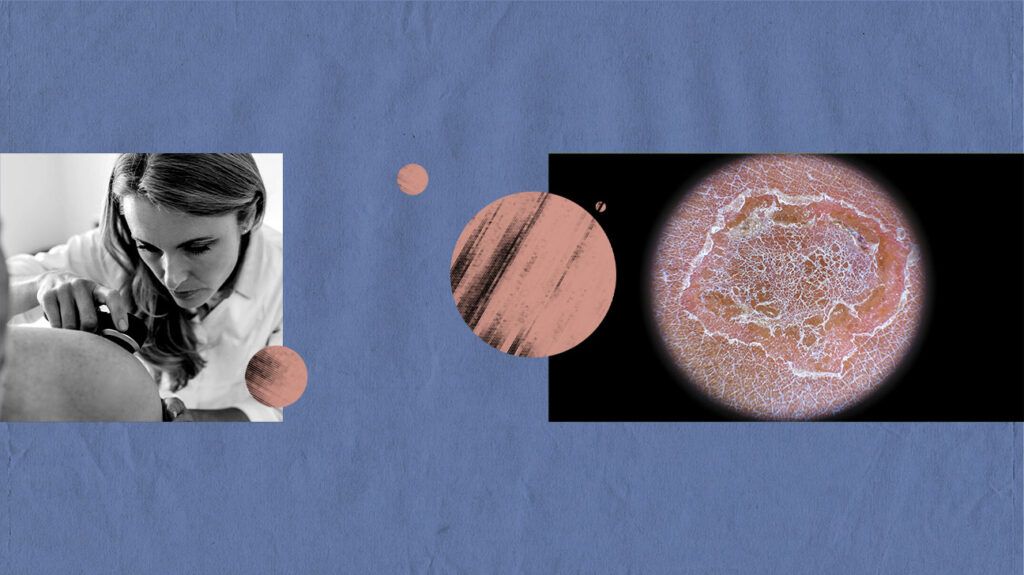Netherton syndrome is a rare, inherited condition affecting the skin, immune system, and hair. People with Netherton syndrome may be at a higher risk of developing infection, allergies, or eczema.
Netherton syndrome is rare and affects very few people in the United States. For some, symptoms occur from birth or soon afterward. Symptoms may include red, discolored, or scaly skin, thin hair, and eczema, among others.
People with this condition tend to have thin skin, increasing their risk of injury or infection.
This article will review Netherton syndrome, its symptoms, what causes this condition, how doctors diagnose it, and the treatment options available for this disease.

Netherton syndrome affects the immune system, skin, and hair. People can inherit this condition at birth or develop it later in life.
Infants may be born with scaly or red skin that leaks fluid. Adults may present with scaly skin that appears circular. Another common feature is thin or bamboo hair.
The Genetic and Rare Diseases Information Center (GARD) states that less than 5,000 people in the United States have Netherton syndrome. It occurs due to mutations or changes in the SPINK5 gene, which is important for maintaining healthy skin and hair.
Having Netherton syndrome puts someone at greater risk of developing allergies, eczema, and asthma.
The symptoms of Netherton syndrome can vary among people and range in intensity.
Some signs and symptoms may include:
- redness or circular scaly skin
- fragile, thin hair
- itchiness
- recurrent respiratory infections
- eczema
- dry skin
- malabsorption
- pulmonary emphysema, which affects the lungs
- delay in the development
- seizures
- intellectual disability
- other immune reactions, such as asthma or hay fever
People with Netherton syndrome can display symptoms of the disease from the first weeks or months after birth. That said, symptoms can also appear at any point in a person’s life.
A person inherits Netherton syndrome in an autosomal recessive pattern. This means a person must inherit two mutated SPINK5 genes from their biological parents to get the disease.
SPINK5 plays an important role in providing instructions to proteins in the skin to help maintain healthy skin and hair.
Mutations in the SPINK5 can mean the gene does not work as it should. As a result, the outer layer of skin becomes thin and breaks down easily. It also leads to atypical hair growth and immune system changes that can make someone more prone to eczema, asthma, or allergies.
People with suspected Netherton syndrome may gain referral to a combination of experts, including:
- a dermatologist
- a genetic specialist
- an immunologist
Healthcare professionals will start by asking about symptoms and performing a physical exam. They will also ask about individual and family history.
Other tests they use to diagnose Netherton syndrome include:
- DNA tests
- tests to assess hair
- a skin biopsy
Receiving a diagnosis can sometimes take a long time. Many other conditions can cause similar symptoms to Netherton syndrome, and they need ruling out first.
Currently, there is
Skin care
Skin care plans may vary depending on the symptoms a person experiences.
A typical treatment routine may involve:
- bathing regularly in mild cleansers and avoiding products that contain soap
- applying moisturizer ointments throughout the day, especially after bathing or showering
- applying topical creams, such as topical calcineurin inhibitors or topical steroids
Other measures
Other measures for managing Netherton syndrome include:
- monitoring for signs of infection
- taking medications to control asthma, hay fever, or any other conditions relating to Netherton syndrome
- taking oral antihistamines to help with itchiness and eczema
- avoiding certain foods that may increase skin sensitivity or allergies
- drinking plenty of fluids and increasing the calorie intake to prevent dehydration and malabsorption
If a person with Netherton syndrome suspects an infection, they need to consult a doctor as soon as possible. If necessary, the doctor can prescribe topical or oral antibiotics to treat the infection.
Children and infants with Netherton syndrome may gain weight and grow slower than those without the disease.
Taking measures to care for the skin daily can help reduce the risk of complications or damage to the skin.
Netherton syndrome is a lifelong condition. It may take time for people to find the right combination of medications and ointments that work for them.
What is the life expectancy of someone with Netherton syndrome?
People with Netherton syndrome can live long and fulfilling lives. However, they may need to make some lifestyle adjustments to manage their symptoms and prevent complications.
Here are some common questions about Netherton syndrome:
Is Netherton syndrome life threatening?
In general, Netherton syndrome is not life threatening without appropriate management in the later years of life. However, some of its complications, such as dehydration and infections, can significantly increase the risk of death
Is there a cure for Netherton syndrome?
Currently,
Netherton syndrome is a rare genetic disorder that can lead to a range of skin, hair, and immunological issues.
It occurs due to mutations in the SPINK5 gene. When there is a disruption in the function of SPINK5, the skin thins, increasing the risk of skin infections and allergies.
While Netherton syndrome may be life threatening in the first years after birth, most people with the condition can live long and fulfilling lives. It is a chronic condition that has no cure, so individuals have to take care of their skin daily to reduce their risk of infection and damage.
